We’re here to help! Wild Yards is a completely free website that is 100% dedicated to helping you create a wildlife-friendly, sustainable yard. Read more
WildYards is reader-supported. When you buy a product through a link on our site, we may earn a comission. Every product is independently selected by our (obsessive) editors and our reviews are unbiased and objective. Read more about our mission or our privacy policy.
If you’re new to growing fruit trees, the lemon tree is a great place to start. This tree loves damp air, moist soil, and full sun. When planted in ideal conditions, lemon trees require very little extra care, and they’re even somewhat forgiving of rookie mistakes, like accidental overwatering. If you’ve just purchased your first lemon tree, or if you’re thinking of starting your own lemon tree from seed, you’re probably wondering what to expect. So today, we’ll be exploring the lemon tree growth stages, from seed to harvest, to give you a better idea of what lies in store.
Lemons are started from small, pale yellow, oval seeds, which sprout in 14 days on average. During your lemon tree’s first year, the plant will focus on root growth and foliage production. But during the second or third year, the plant will start blooming. Lemons are self-pollinating and fully mature trees can produce more than 100 pounds of lemons in one growing season.
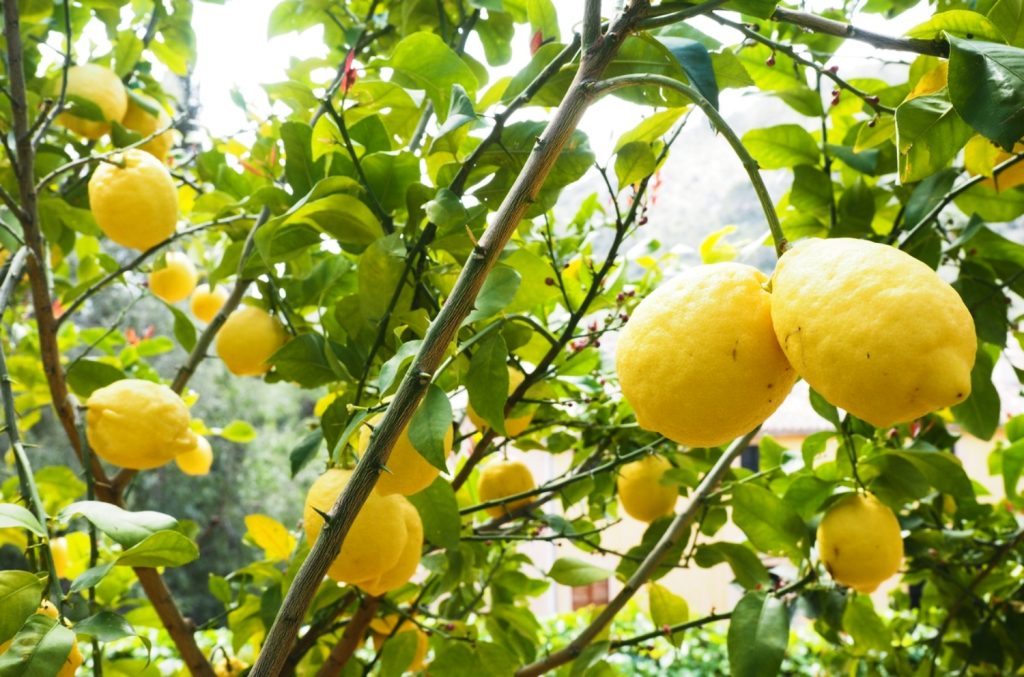
Stage 1: Seeds and seedlings
Most of the lemon trees that you find in nurseries and garden centers have been grafted. But it is possible to grow lemon trees from seeds. Oval in shape with a ridged texture, lemon seeds are white to pale yellow to green and measure around ⅓-inch in length. Storebought lemon seeds may not germinate depending on their variety. So, for best results, use seeds that have been purchased from a seed catalog.
Sow a single lemon seed at a depth of ½-inch in a half-gallon pot. Be sure to use potting soil that has been designed for citrus trees. Tamp around the seed gently to remove air pockets, and water the seed well. Keeping the soil warm and moist is key during this lemon tree growth stage. So set the pot on a warm, sunny windowsill and water the soil regularly to keep it damp. Like asparagus seeds, lemon seeds can be slow to start. But you should see a green shoot peaking up out of the soil at around the 14-day mark.
The first set of leaves your lemon seedling grows is seed leaves. These leaves help the plant kickstart the photosynthesis process and are soon followed by the seedling’s first set of true leaves. True leaves take the shape of the plant’s adult leaves but are much smaller. During this lemon tree growth stage, your lemon seedling will have shiny oval leaves with pointed tips and smooth edges. Your lemon seedling will grow fastest when the temperature stays between 70 and 80 degrees Fahrenheit.
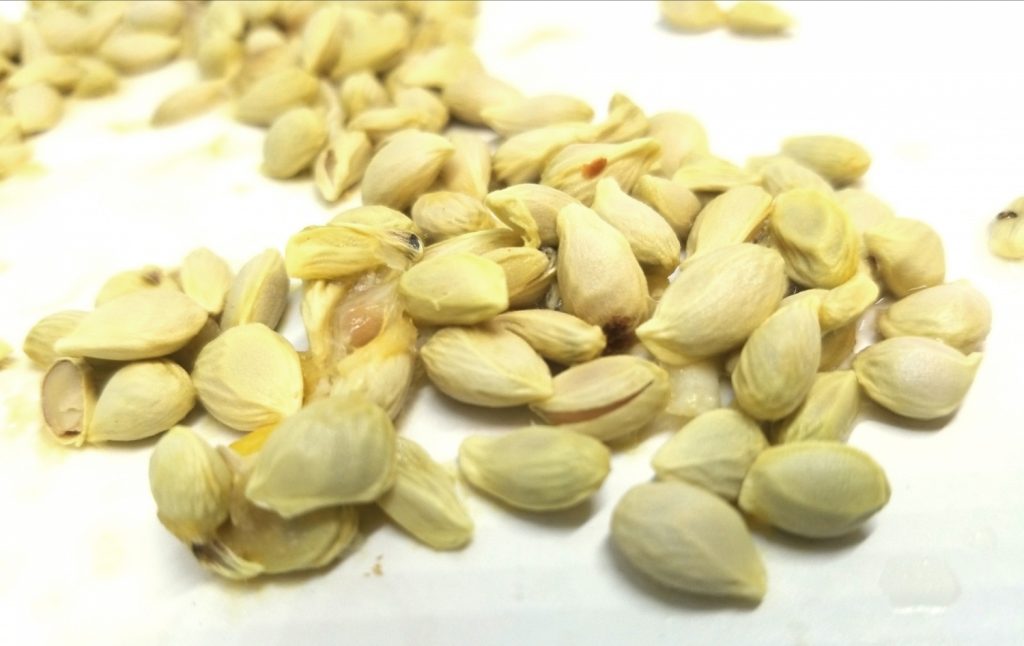
Stage 2: Youth/Sapling
Lemon trees can take quite a while to get established, especially when they’re grown from seeds. Your lemon seedling may not reach the youth stage for 2 to 3 years. Only once your lemon tree measures 3 to 6 feet tall is it considered a sapling. If you’re hoping to enjoy fresh lemons in a season or two, consider purchasing an older tree. But, if you’re dedicated to seeing the lemon tree growth stages firsthand, prepare to be patient!
Young lemon plants need extra care during this period. Be sure to keep your lemon sapling out of the wind to prevent it from breaking in two. You’ll also need to protect the sapling from cold weather. Bring the plant indoors when the temperature drops below 40 degrees. Allowing your lemon sapling to sit out in cool weather for too long will severely stunt its growth.
Stage 3: Maturation
During this lemon tree growth stage, your tree will grow deeper roots to help it reach the nutrients and moisture it needs to survive. It will also develop thicker foliage and a stronger trunk to help shuttle nutrients to all parts of the plant. Up until now, your lemon tree has probably looked scrawny and spindly. But once the plant starts getting established, it will fill out and start looking more like a tree.
It’s important to fertilize your lemon tree during this stage of its development. Lemon trees are heavy feeders, especially when they’re growing. Like all other plants, lemon trees rely on nitrogen, phosphorous, and potassium in particular to maintain healthy growth. Although lemon trees require more nitrogen than phosphorous or potassium at this stage, they still need relatively low doses of nitrogen.
For best results, feed your lemon tree using a fertilizer specifically designed for citrus trees. These fertilizers contain a 6-3-3 NPK ratio that delivers just the right amount of each nutrient. Always follow the manufacturer’s instructions when applying fertilizer, and avoid overfeeding your lemon tree, otherwise, its leaves may turn brown and curl.
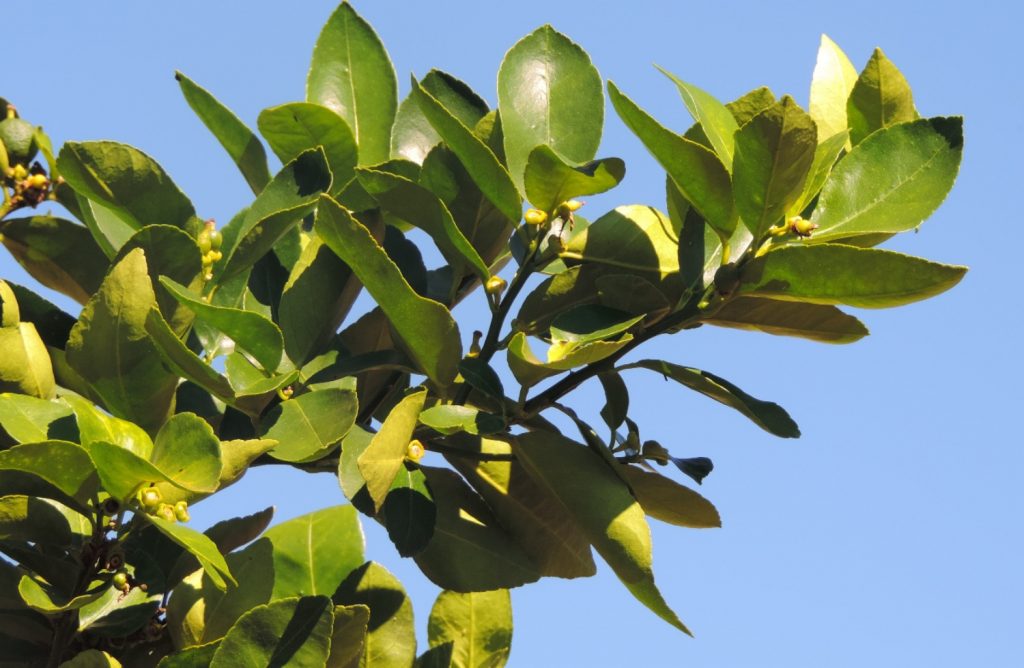
Stage 4: Flowering
Lemon trees typically get their first set of flowers when they’re 3 or 4 years old, but some trees may take as long as 6 years before budding out. During this lemon tree growth stage, your tree will shift its focus from getting established to reproducing.
The flowers of the lemon tree are white with velvety petals and yellow anthers. Although lemon trees are self-pollinating, many growers notice better-tasting crops when pollinators visit the self-pollinating plants. Fortunately, lemon trees produce fragrant blossoms that are popular with bees, butterflies, and hummingbirds.
Depending on the variety, lemons can bloom as many as 4 times a year. Because lemon trees love warm weather, they may only bloom once in cooler growing zones. Plants begin budding out in the spring, usually between March and May.
It’s important to note that once your lemon tree begins flowering, its nutritional needs will increase dramatically. Plants use fats, proteins, and sugars to create pollen and nectar. If your lemon tree doesn’t have enough nutrients, it may not be able to bloom.
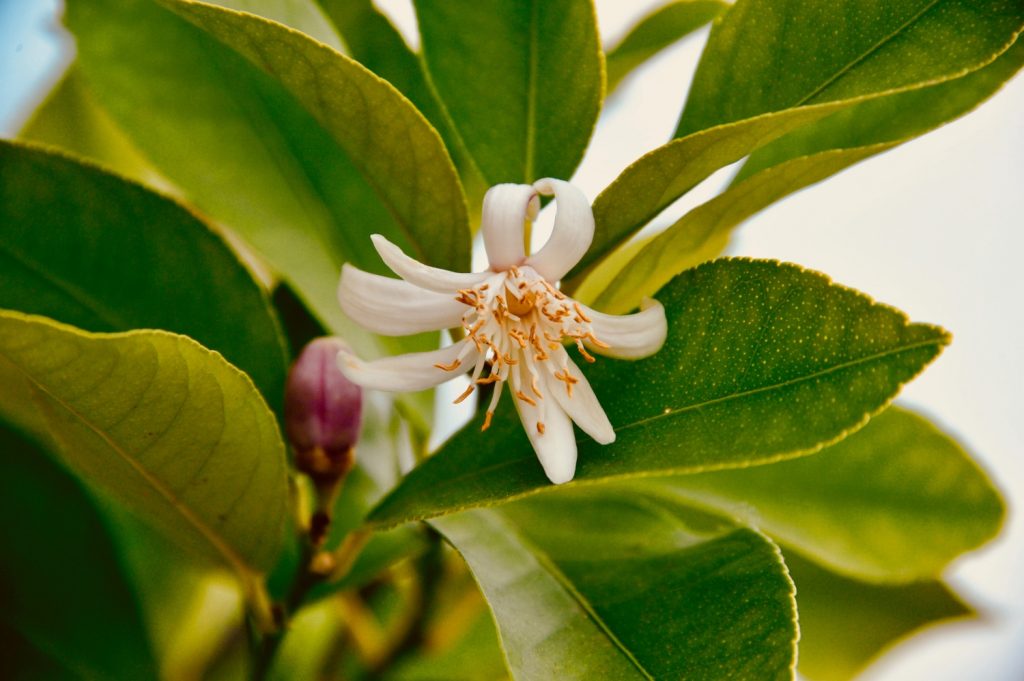
Stage 5: Fruiting
Once the flowers have been pollinated, the tree begins making fruit. Tiny green lemons replace the blossoms, which dry up and fall off. While young lemon trees may only produce a handful of lemons, older established trees can produce more than 100 pounds of lemons in a year.
During the fruiting process, your lemon tree’s nutritional demands will continue to increase. If you notice flowers and young fruits dropping off the tree, then it may not be getting all of the minerals it needs to support the fruiting process. Keep a close eye on your lemon tree during this growth stage so you can make adjustments to its care if needed.
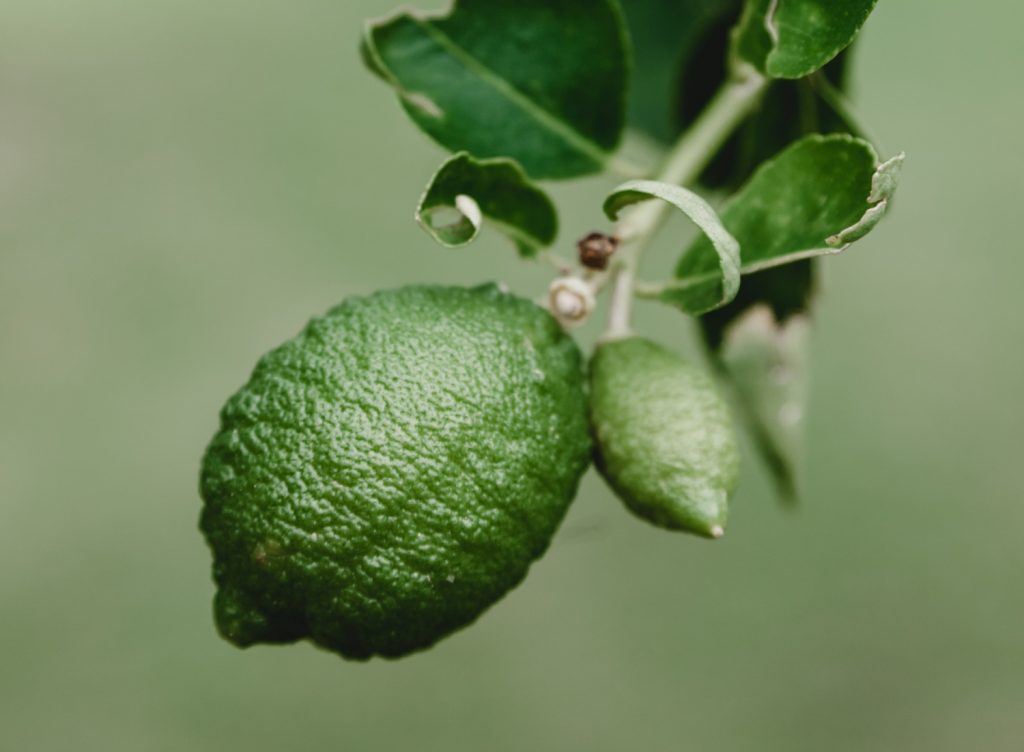
Stage 6: Ripening
Once fruiting has initiated, the plant works hard to divert nutrients to each fruit so it can continue growing. Lemons start out green and continue getting greener so that they resemble limes until they start ripening even more. As your lemons grow, they will soon develop the sunny yellow color we associate with these sour man-made fruits.
The shape and texture of your lemons will also change during the ripening lemon tree growth stage. Lemons start out somewhat round but become elongated as they mature. Their skins also become smoother and develop a strong citrusy fragrance. The peels of ripe lemons are so potent that they’re ideal for use in cooking and homemade essential oils.
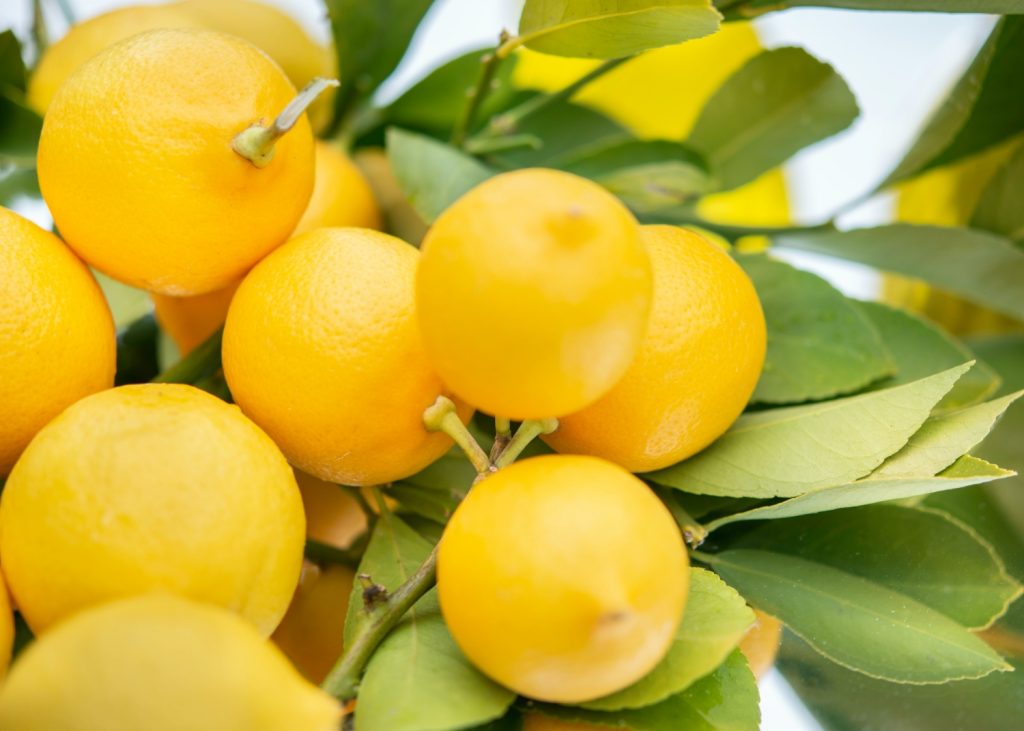
Stage 7: Harvesting
After years of waiting for your lemon tree to bloom, it’s finally time to harvest your first fruits. Lemons are ready to be harvested when they turn a deep yellow, when they measure 2 to 3 inches in diameter, and when they feel slightly soft when squeezed. You may also notice that ripe lemons have a more fragrant smell than unripe ones.
In general, lemons are ready to be harvested 6 to 9 months after the tree first starts to bloom. You can harvest your tree’s lemons by simply pulling them off the tree. Ripe lemons should come right off if you give them a sharp tug. But you can also use scissors or a knife to trim the lemons away from the branches.
Fresh lemons can keep for 1 to 2 weeks when left out at room temperature. Be sure to store them away from other ripening fruits, like apples, grapes, and bananas. Fruits release ethylene gas as they ripen, which can cause surrounding fruits to ripen more quickly. It’s for this same reason that you should avoid keeping fruit near cut flowers.
Lemons tend to last much longer when kept in a refrigerator. Store your homegrown lemons in the crisper drawer of your refrigerator, where they’ll last for a month or longer. You can also try storing the lemons in individually sealed bags to lock in moisture, or squeezing them and freezing the juice.

Stage 8: Drying out
If ripe lemons are allowed to stay on the tree, they will become overripe and, eventually, fall off. Lemons may turn brown and dry up or get moldy and ferment. If the latter occurs, then the fruits may attract insects like gnats, ants, and wasps, which can prove themselves to be a real nuisance, especially if your lemon tree is growing close to your home.
Leaving overripe lemons on the tree also hinders fruit production. Overripe fruits leech valuable nutrients away from the plant, nutrients that could be used to produce new fruits. And, what’s more, leaving overripe lemons on the tree can impact its productivity in future growing seasons, too. Which makes picking ripe lemons regularly all the more important.
Although lemon trees growing in warm regions may retain most of their leaves over the winter, trees planted in cooler growing zones will lose their leaves in the fall in preparation for their winter dormancy. You’ll notice your lemon tree’s leaves turning yellow and brown before falling off.

Saving lemon seeds to grow new trees
If you want to grow more lemon trees, you can save some of the seeds from your harvest. Simply cut a ripe lemon in half and either squeeze the seeds out or use a spoon to remove them. Next, rinse the seeds in cold water to wash away any pulp, and set them out on a napkin or tea towel to dry. Be sure to set the seeds in a cool place.
Once the seeds feel dry to the touch, move them onto a plate to continue drying for a few weeks. You’ll know your lemon seeds have dried enough when they no longer feel squishy to the touch. Once your lemon seeds are thoroughly dry, you can store them in a paper envelope until you’re ready to plant more lemon trees.
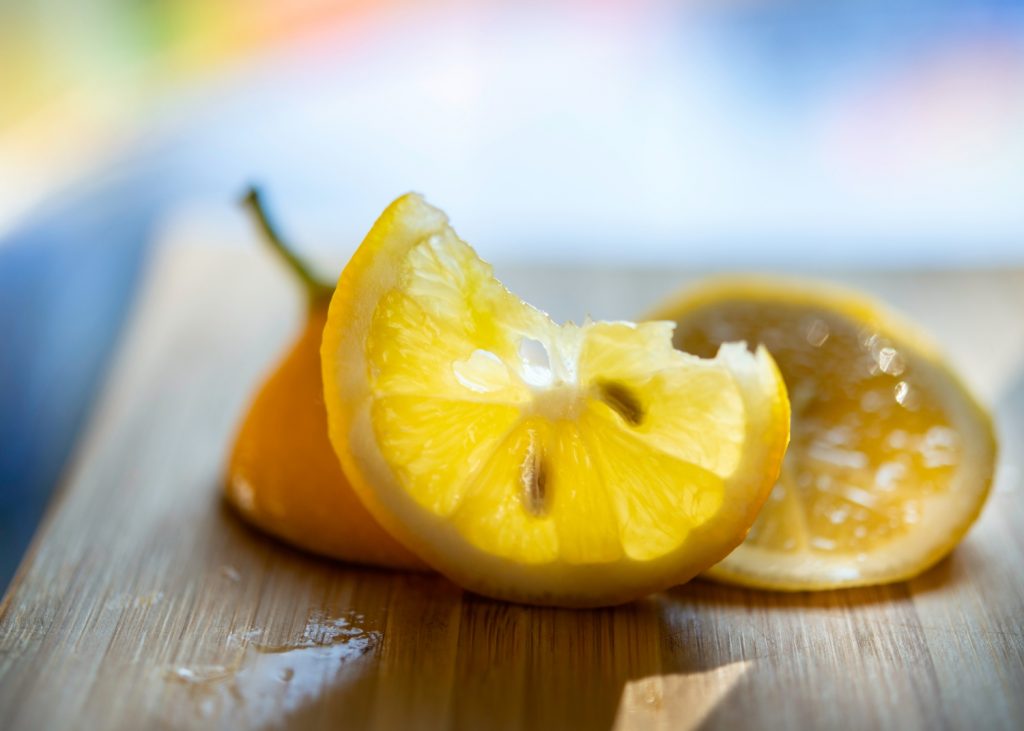
What’s the best way to grow healthy lemons?
The best way to grow healthy lemons is to meet all of the tree’s growing requirements. Plant your lemon seeds in sandy loamy soil that can easily retain a bit of moisture, but that also allows excess water to drain quickly. Ideally, the soil should be slightly acidic, with a pH of 5.5 to 6.5. Use peat moss to lower the pH if necessary. You should also test the soil’s mineral profile to determine if any nutrients need to be added to the soil.
Lemon trees grow best in warm, sunny climates, so be sure your lemon tree gets at least 6 hours of direct sunlight every day. In especially hot climates, your lemon tree may appreciate some dappled afternoon shade. Water your lemon tree whenever the soil feels dry at a depth of 1 to 2 inches, and use a mulch to protect the roots from rapid water loss.
It’s also important to fertilize your lemon trees regularly. Ornamental trees and privacy trees can often grow for years without plant food. But fruit trees are another story. Without adequate nutrition, your lemon tree won’t produce many fruits. The fruits the tree does produce may be unpalatable. So invest in a quality citrus tree fertilizer and use it regularly — but don’t overuse it. Too much fertilizer can lead to nitrogen burn.
Are there any tricks for growing better-tasting lemons?
One of the keys to growing great lemons is reducing stress on the tree. Keep the tree warm. Making sure the soil is at the appropriate pH and pruning the tree regularly can also help. Additionally, picking fruits just before they’re ripe and allowing them to ripen in a cool, dark place can give them a sweeter flavor.
Growing a lemon tree from seed requires patience. But, for an avid gardener and sour fruit lover, there’s nothing more rewarding than watching the lemon tree growth stages in action.